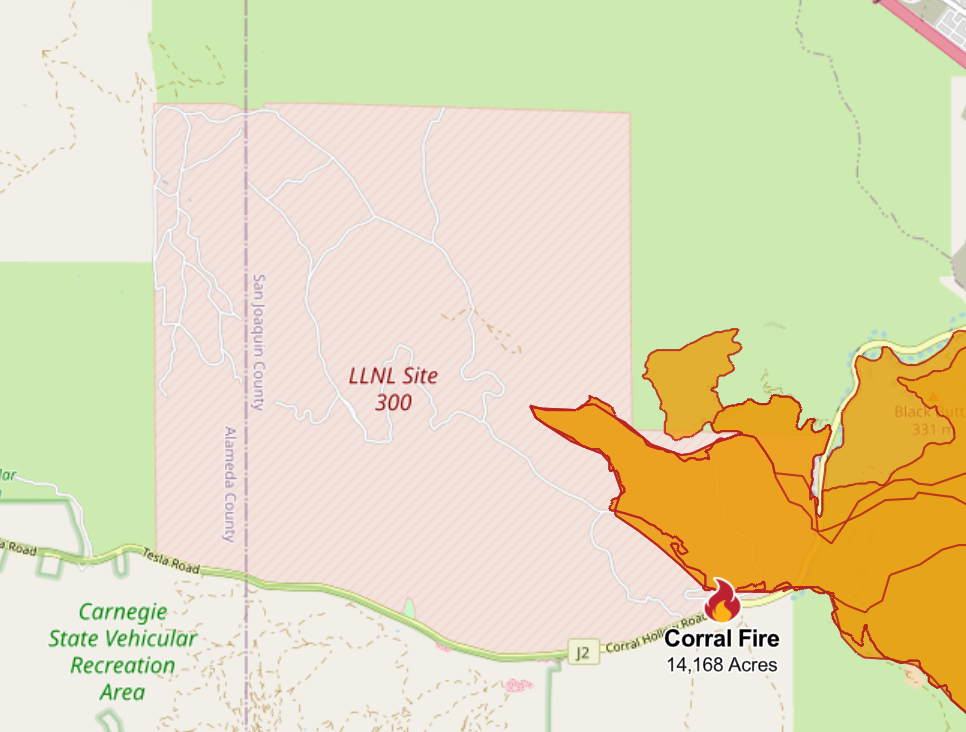
The recent Corral Fire quickly grew to 14,168 acres, and perhaps most concerning, burned a portion of Lawrence Livermore National Laboratory Site 300 High Explosives Testing Range.
Since it was founded in 1955, Site 300 operations have included open-air blasts with high explosives and radioactive materials used in nuclear weapons. Activities there have polluted the soil, surface water, springs and groundwater aquifers with chemical and radioactive wastes including solvents, dioxins, furans, PCBs, perchlorate, high explosives compounds and radionuclides, (namely tritium and depleted uranium). The recent fire required an evacuation of workers at Site 300 and on-site near the General Services area, which is an active cleanup site for perchlorate in the soil and groundwater.
Lab officials have claimed that the fire was unrelated to controlled burning within Site 300, which was initiated May 28th, only four days prior to the Corral fire. Alameda Fire, which managed the controlled burnings, also stated that the two incidents are unrelated. However, the cause of the Corral fire is still currently under investigation.
LLNL’s Smoke Management Plan states that their controlled fires were meant to last 12 days, and were focused on “hazard reduction.” Contaminants, such as depleted uranium and PCBs, are not mentioned in their report. When undergoing high levels of heat, they can become other compounds, including furan and dioxin, which are extremely toxic. Both the controlled fire and wildfires like the Corral Fire could spread these contaminants into the air, local ecosystems and residential areas, threatening the health of locals.
In their Final 2024 SWEIS (Site-Wide Environmental Impact Statement), LLNL recognized the concerns of numerous groups and citizens regarding their construction plans of a 75,000 sq.ft. Advanced 3D Hydrotest Facility at Site 300, including the risk of fire, which is increasingly high. LLNL does not provide evidence to dispute concerns about the facility, which will house hazardous materials, instead citing the potential research benefits of the building and are planning to move forward with this expansion.
Tri-Valley CAREs will be following up with the Lab and local fire departments request to gain some more informative and conclusive evidence regarding the cause of the Corral fire and its relationship to Site 300. We also will continue to oppose construction of LLNL’s Advanced 3D Hydrotest Facility. Stay tuned for more…